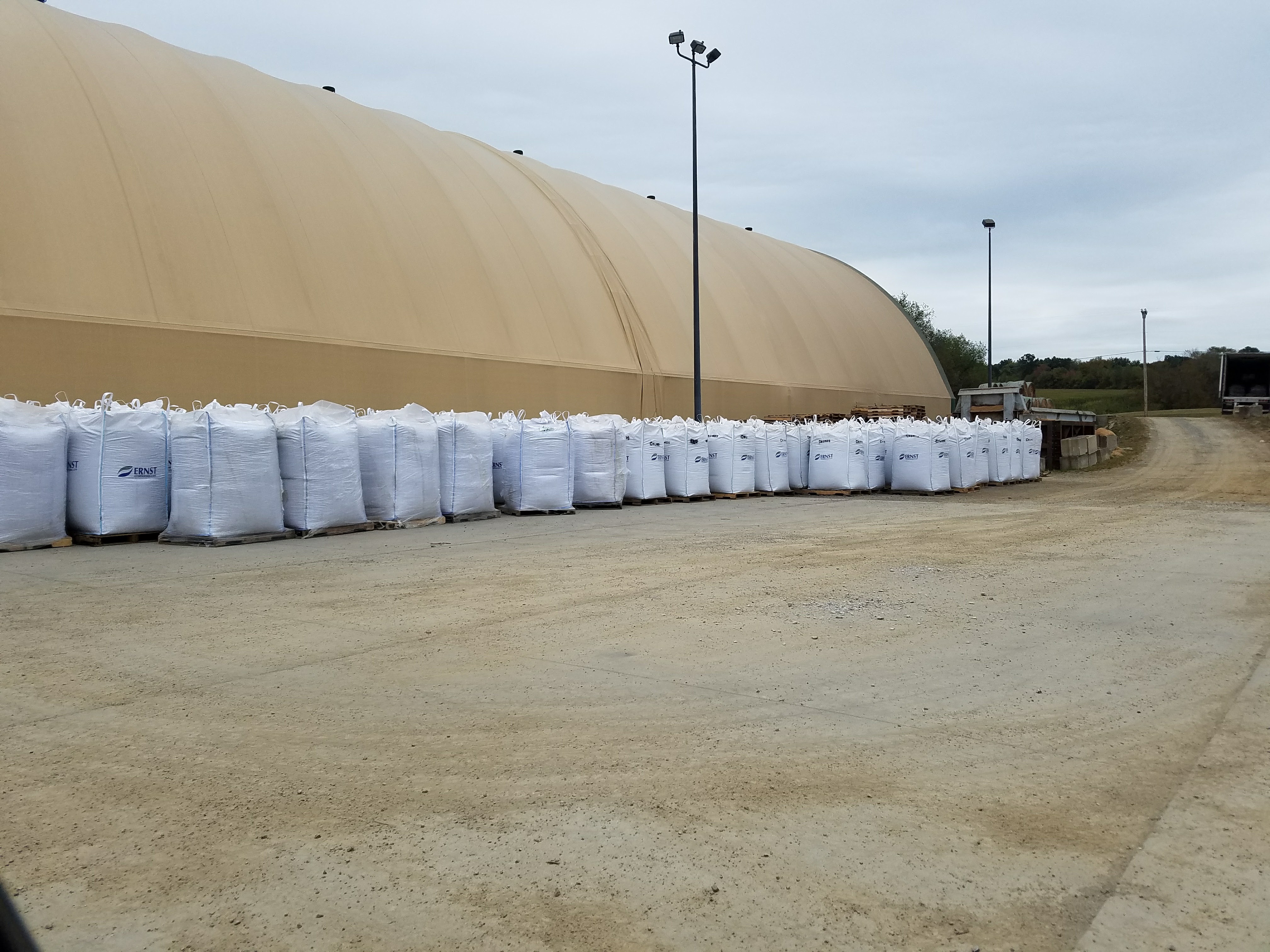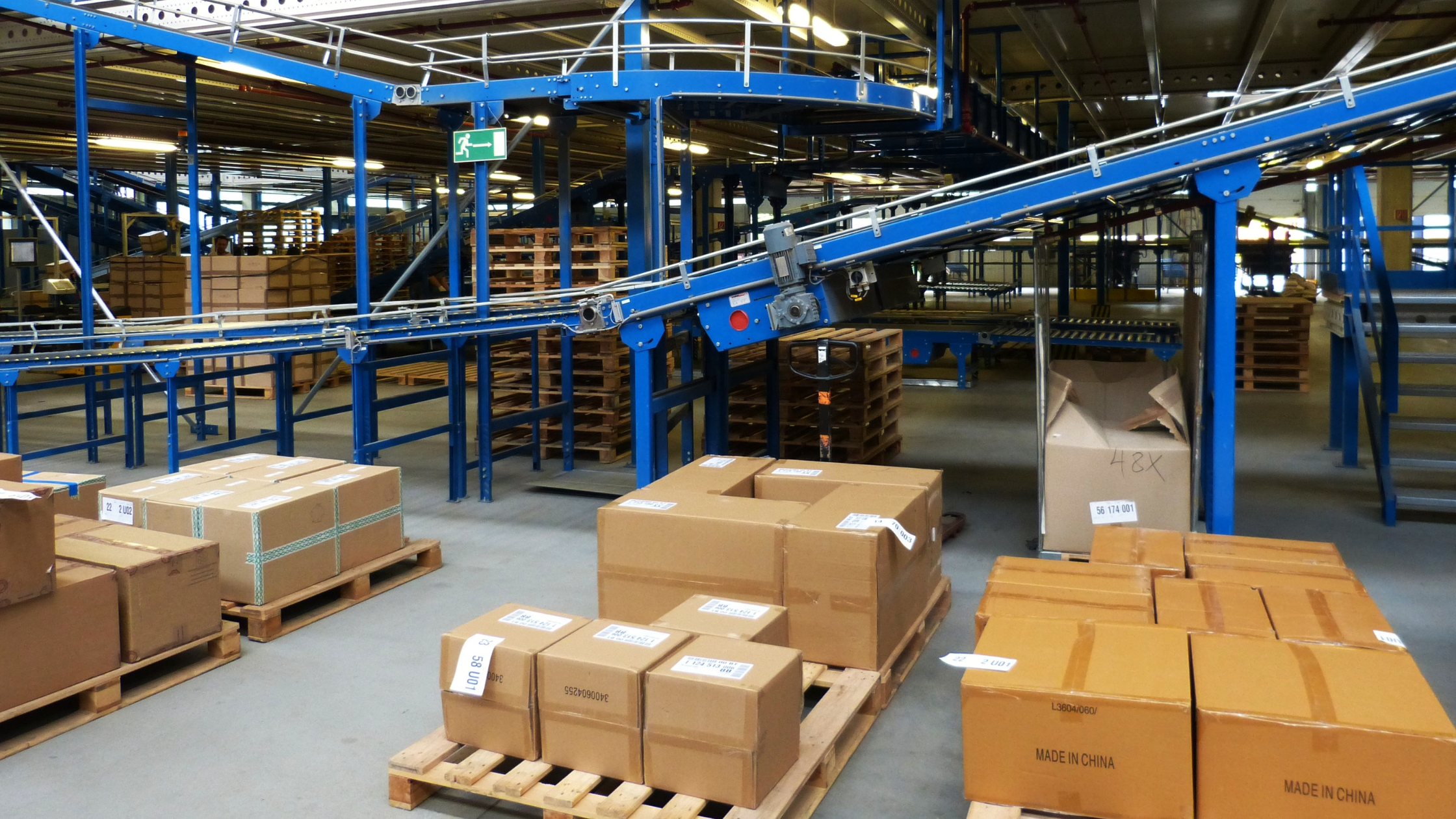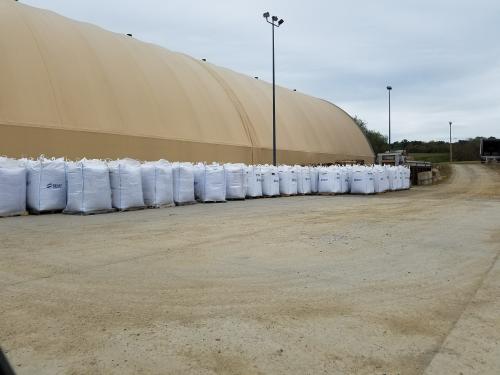
Bulk bag filling systems are designed to accurately and safely fill large bags, commonly known as FBICs (Flexible Intermediate Bulk Containers). The need to accurately fill bulk containers can be found in various industries such as fine powders in the chemical industry, bulk food products, plastic pellets, and even heavy materials like sand or gravel. Bulk bag fillers ensure precision and consistency in filling. The versatility of bulk bag filling systems makes them an asset in any sector where large quantities of bulk materials must be processed, packaged, and distributed efficiently and accurately.
An efficient bulk-filling process can come with its own set of challenges. Here are 5 things to consider and look out for when integrating a bulk system into your manufacturing process.

1. Inconsistent Filling and Material Spillage
One of the most common problems we see with bulk filling systems is inconsistent filling which can cause spillage, instability, and unsafe conditions. These cause significant challenges, impacting operational efficiency and workplace safety. When bulk bags are not filled properly, it leads to inconsistent material weight, or unstable containers, creating handling and transportation headaches.
Fortunately, there are ways to avoid bulk material filling problems using a properly configured bulk filling system. Precision-engineered equipment is designed to handle materials accurately and efficiently, ensuring consistent, accurate, and safe filling.
Additionally, advanced control systems play a pivotal role in regulating material flow. These systems allow for real-time adjustments during the filling process, ensuring that material is dispensed at the correct rates and quantities. This minimizes spillage and ensures the containers are consistent and sturdy. By integrating these solutions, you don't have to worry about material spillage, paving the way for smoother, safer, and more cost-effective operations.

2. Dust Emissions During Filling
The last thing you want as a manufacturer is dust emissions during the bulk bag filling process because it poses a health hazard and is also a source of product loss. In environments where fine particles are being moved, dust can easily become airborne.
To mitigate these risks, it's essential to employ dust containment and extraction solutions. These can range from integrated dust collection systems within the filling equipment to external ventilation and air purification systems, all designed to capture and contain dust at the source. By effectively managing dust emissions, businesses can not only safeguard employee health and comply with safety standards but also improve their operational efficiency by minimizing material loss.

3. Inadequate Deaeration
Deaeration refers to the process of removing air from the material being packed into bulk bags or containers. This is an important step in many bulk material handling processes, especially when dealing with powdery or granular materials. The presence of excess air within these materials can lead to inefficient filling, unstable loads, and increased volume of the filled bags, which can complicate storage and transportation.
The most effective way to avoid inadequate deaeration is by investing in equipment that has advanced technology already in place. These systems are designed to effectively remove trapped air from the material during the filling process, resulting in more densely packed bags. These could include vibration systems, vacuum systems, automated densification, pressure rollers, or programmable logic controllers.

4. Bag Handling and Positioning Issues
A key challenge in bulk bag filling is the precise placement and alignment of bags, a process that is crucial yet often prone to inefficiencies. Incorrect positioning of bulk bags can lead to operational bottlenecks, causing significant delays and affecting the overall throughput of the filling process. This challenge is particularly evident in systems lacking automated features, where manual intervention is required to ensure accurate alignment, a process that can be both time-consuming and labor-intensive.
Integrating automatic bulk bag handling systems offers a robust solution to this issue. These systems employ advanced precision engineering to ensure that each bag is perfectly aligned with the filling spout, thereby streamlining the filling process. This precision not only minimizes the risk of material spillage and waste but also significantly enhances operational efficiency. By automating the bag placement and alignment process, businesses can reduce manual labor, cut down on downtime, and optimize the entire bulk filling operation, leading to a smoother, faster, and more cost-effective production cycle.

5. Lack of Flexibility for Different Materials
If you desire to package different materials or container types/sizes, using the same bulk filling system, you could run into some issues with out-of-the-box equipment. This variability often complicates operations, as traditional filling systems may not be equipped to handle such a wide spectrum of materials and containers efficiently.
The solution is to make sure your choice is a versatile bulk bag filling system designed for multi-material and container handling. These customizable filling systems are the epitome of adaptability, engineered to accommodate a variety of materials with ease and precision. Whether dealing with lightweight, aerated materials or dense, coarse substances or dealing with multiple FIBC sizes and target weights, these systems can be fine-tuned to ensure optimal filling performance. This flexibility not only streamlines the filling process but also reduces the need for multiple specialized machines, leading to significant cost savings and operational efficiency. By adopting such customizable and versatile solutions, businesses can confidently tackle the challenges of multi-material handling, ensuring a smooth, efficient, and cost-effective bulk bag filling operation.
Addressing the common problems in bulk bag filling operations – from material spillage and dust emissions to the challenges of bag alignment and handling diverse material types – is crucial for enhancing efficiency and ensuring workplace safety.
At Erie Technical Systems Inc, we understand these challenges and have developed standard options for our bulk bag filling machines and systems that offer highly customizable technology solutions to meet your specific bulk filling needs with ourValuMAX, DensiMAX, and SysteMAX bulk filling systems. we will help you identify which features are the most essential to your manufacturing process. We will then tailor your system to your operational requirements, ensuring that you not only overcome these common hurdles but also achieve optimal performance and safety standards.
For expert solutions that are designed with your unique challenges in mind, contact us! Explore our range of specialized bulk filling solutions and let us help you streamline your processes with precision and care. Reach out today for a consultation and take the first step towards a more efficient, safe, and productive operation.

